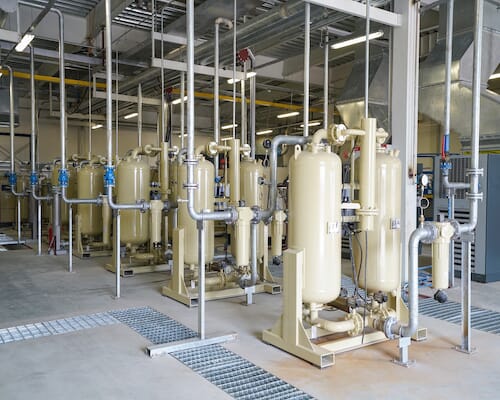
A Quick Guide to Accurately Size Air Compressor Tanks
September 27, 2023
Reasons Why You Should Be Monitoring Air Compressor Data
October 11, 2023Benefits of Rotary Screw Air Compressors for Energy Applications
Kaishan USA | October 4, 2023 | Uncategorized
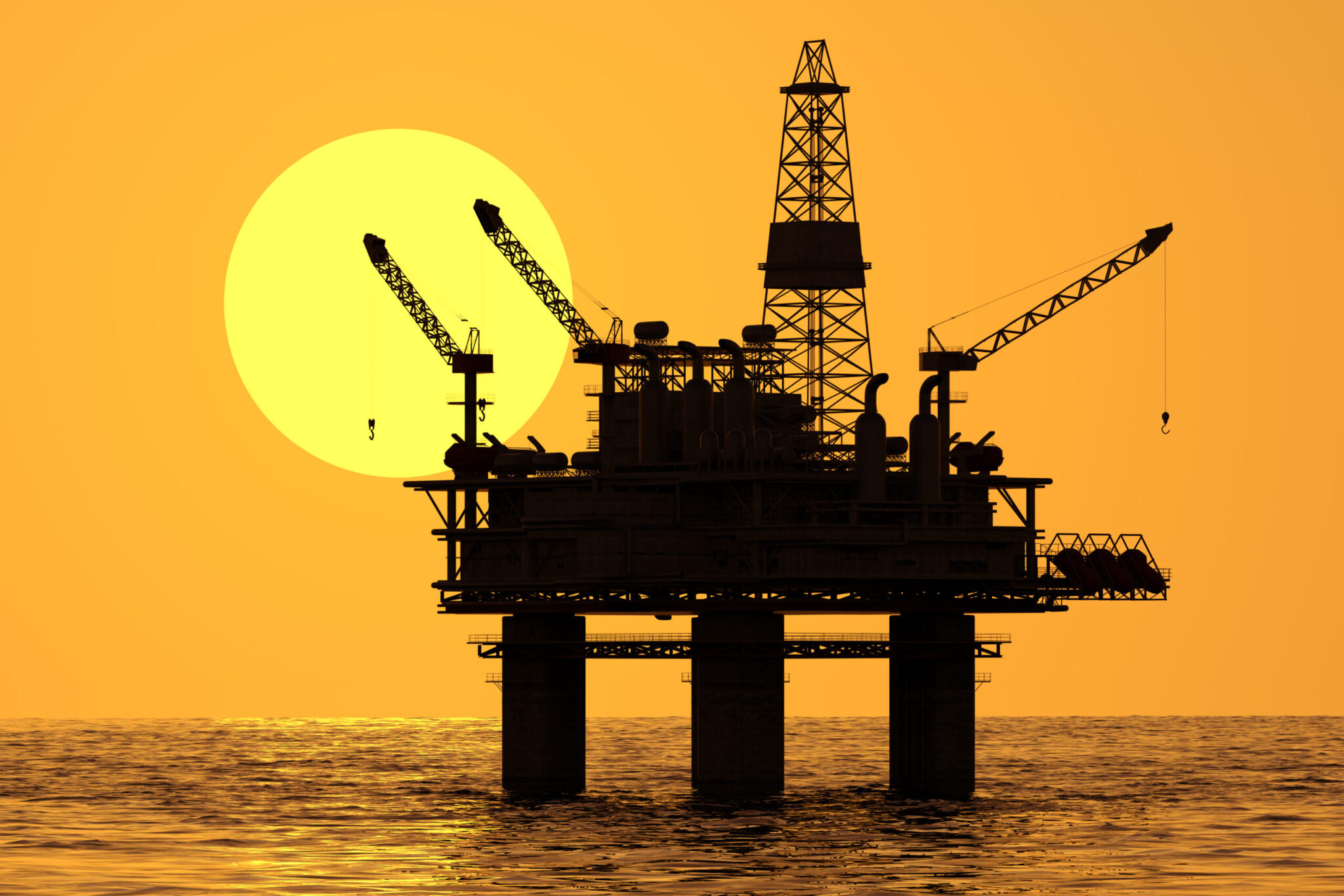
Offshore platforms are much larger than land-based drilling rigs because they sometimes need to go through hundreds or thousands of feet of water before drilling begins.
Compressed air plays a pivotal role in almost every energy-related application in the global economy. Compressors support all stages of oil and gas production. They show up in power plants and wind energy applications. They’re even found in energy storage. Let’s take a closer look.
Advantages
Rotary screw air compressors appear in so many energy-intensive applications because of a wide range of advantages, including the following:
-
- Efficiency. Rotary screw air compressors are based on a simple, time-tested design that enables impressive efficiency. They deliver a continuous flow of air, resulting in smoother operation and significantly reduced energy waste. They operate continuously, minimizing fluctuations and enhancing overall efficiency.
- Safety. Compressed air systems are a natural for the industry because they are relatively safe, an essential concern in an industry with environments like drilling sites that can be volatile or explosive. As the U.S. Occupational Health and Safety Administration notes, “Flammable gases, such as well gases, vapors, and hydrogen sulfide, can be released from wells, trucks, production equipment or surface equipment.” Not surprisingly, the industry has fatal injury rates double or triple the annual average of all occupations, according to the U.S. Bureau of Safety and Environmental Enforcement.
- Steady air flow. Rotary screw machines are known for producing steady streams of compressed air without the pulsations that sometimes occur with other types of compressors, especially reciprocating or piston compressors.
- Versatile. Rotary screw compressors work best with a 100% duty cycle—we recommend setting up your compressed air system so that they operate as close to full load as possible. In addition, they can handle variations in demand and temperature extremes.
- Less maintenance. Because they have fewer moving parts, rotary screw air compressors require less maintenance.
- Long-term reliability. Rotary screw machines are designed for long-term reliability, giving them a relatively low total cost of ownership.
- Footprint. Rotary screw air compressors are compact and occupy relatively little floor space.
- Quieter. Compared to other types of compressors (especially reciprocating machines), rotary screw air compressors make much less noise.
- Warranties. Rotary screw compressors generally have better warranties than other types of air compressors because of their reliability, efficiency and long life. In fact, Kaishan’s KRSP and KRSP2 screw compressors are backed by a lifetime warranty on the airend.
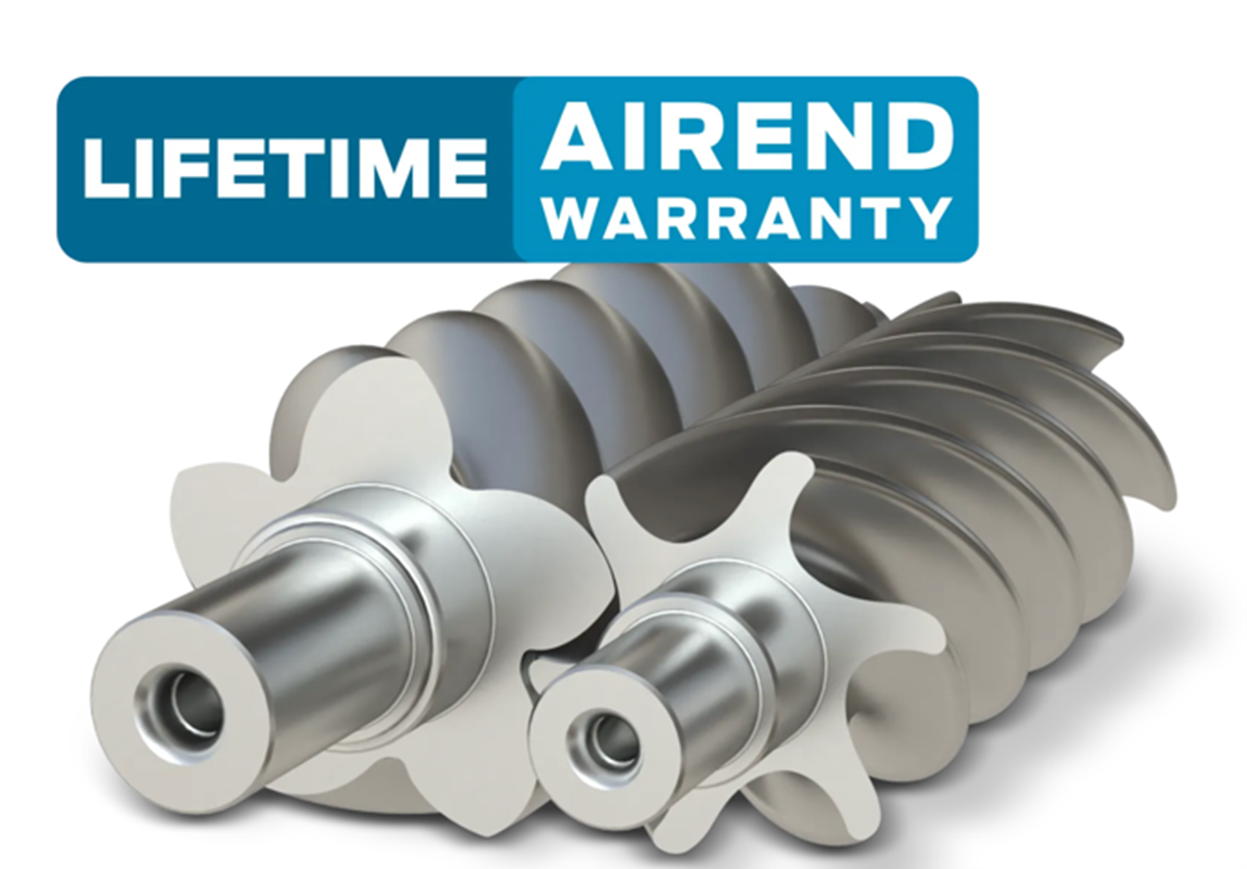
Kaishan’s KRSP and KRSP2 screw compressors are backed by an unmatched lifetime airend warranty thanks to their reliability, efficiency and long life.
Applications
While it is true that many larger applications like drilling operations and refineries use powerful centrifugal compressors to produce large volumes of compressed air, you find rotary screw air compressors meeting a wide range of needs in a compressed air system, serving as:
-
- Backup air. When a refinery’s huge centrifugal air compressors shut down, it may take days or even weeks to get them back in service. Both refineries and drilling operations find that rotary screw air compressors are much more cost-effective than the diesel compressors they have used in the past. Two to four times less, as noted below.
- Trim air. Some well-designed compressed air systems use rotary screw air compressors to supplement the large centrifugal units, especially during periods of peak demand.
- Point-of-use air. Occasionally, it makes sense to use a rotary screw air compressor to meet the needs of a particular tool or application. Especially if it requires a lot of pressure or flow and is a considerable distance from the rest of the compressed air system or is not on the main air line.
Both single- and two-stage rotary screw air compressors are available, but two-stage models will generate more compressed air for less energy.
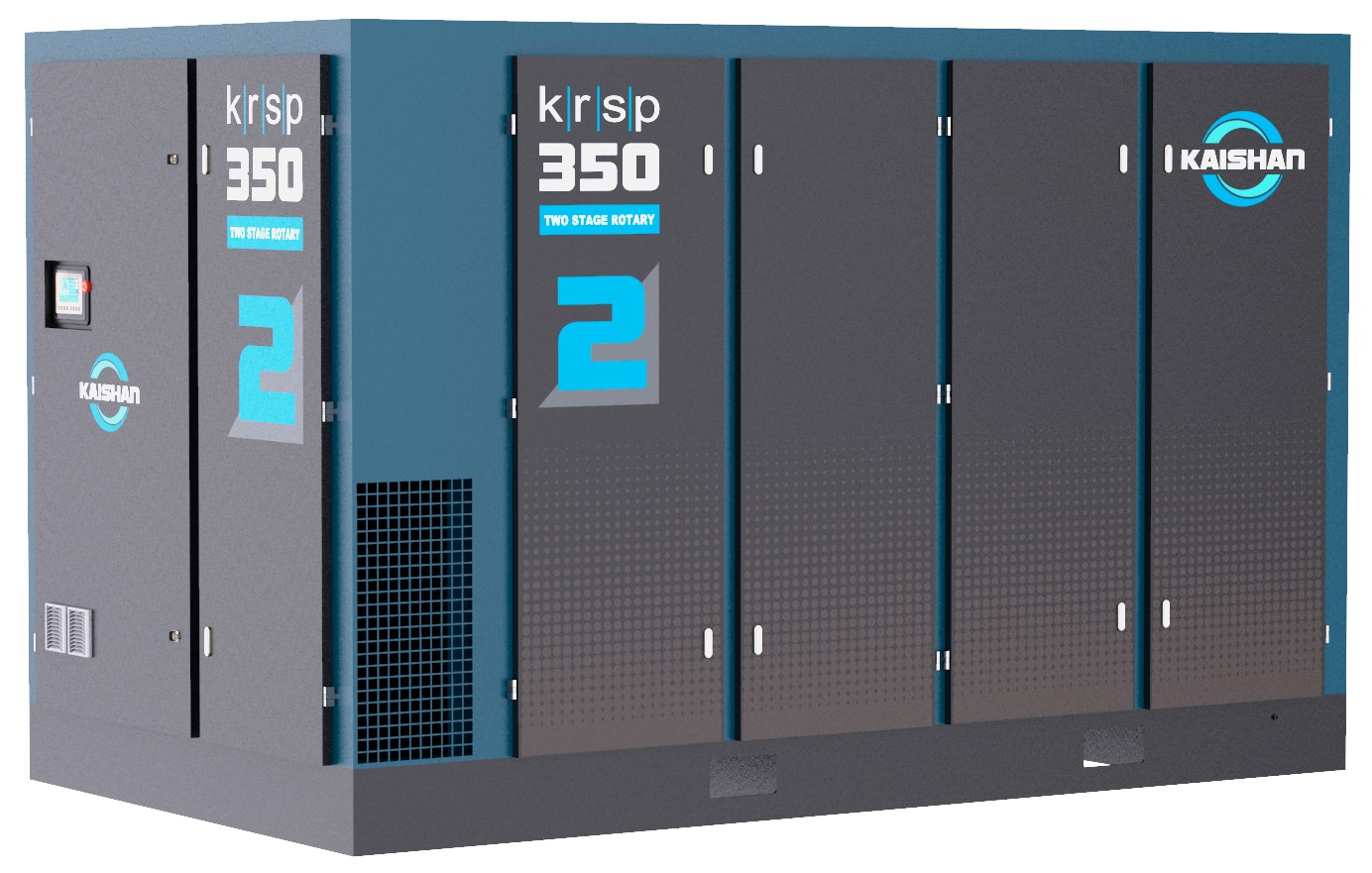
Kaishan’s KRSP2 premium rotary screw air compressors deliver large volumes of air with industry-leading efficiency and reliability.
Used Across the Industry
Rotary screw air compressors are used in applications as wide-ranging as onshore drilling, offshore drilling, gas compression, pipeline and process services and well testing.
Exploration
From seismic exploration to production, drilling and treatment, air compressor systems help recover crude oil and prepare it for shipment and processing. Applications can range from small rigs to much larger drilling operations.
Compressed air supplies the power that turns drill bits in drilling operations and helps control the pressure inside the wellbore, preventing dangerous blowouts. Operators also use compressed air to aerate drilling fluid or mud and blow away the debris that accumulates on the drill bit.
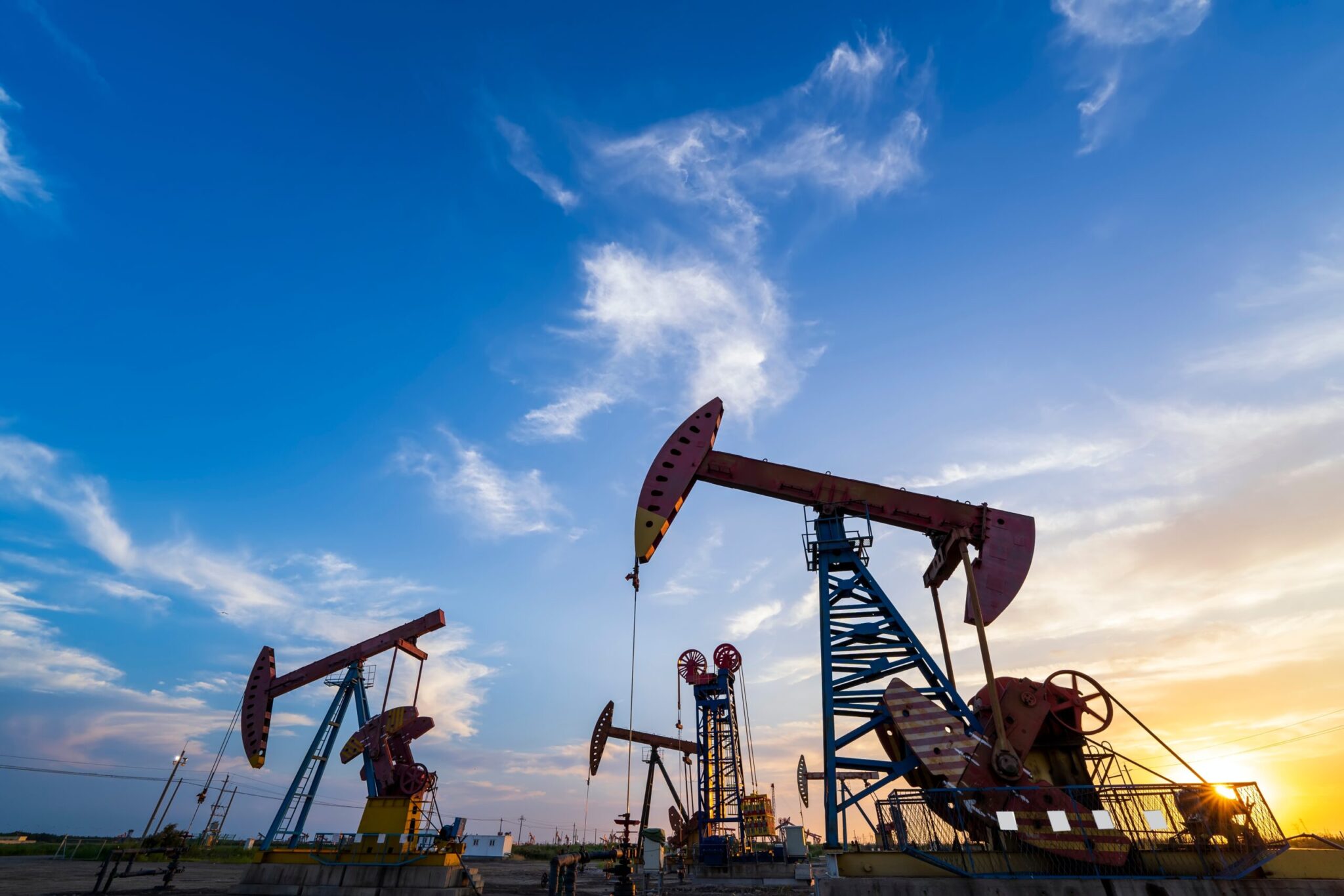
Air compressors support a wide range of drilling operations in oil drilling operations, both onshore and offshore.
Offshore oil platforms may also use compressed air for painting, sandblasting, cleaning or blowing out pipelines.
In addition, air compressors supply compressed air to downhole tools that take critical performance measurements on a well while fluids still flow from the reservoir.
Transportation
Air compressors help transport crude oil from the source to refineries where it can be processed. They help move products in pipelines and transfer stations.
They are also involved in vapor recovery, fuel gas and wellhead boosting. They maintain or increase flow into a pipeline system transporting gas.
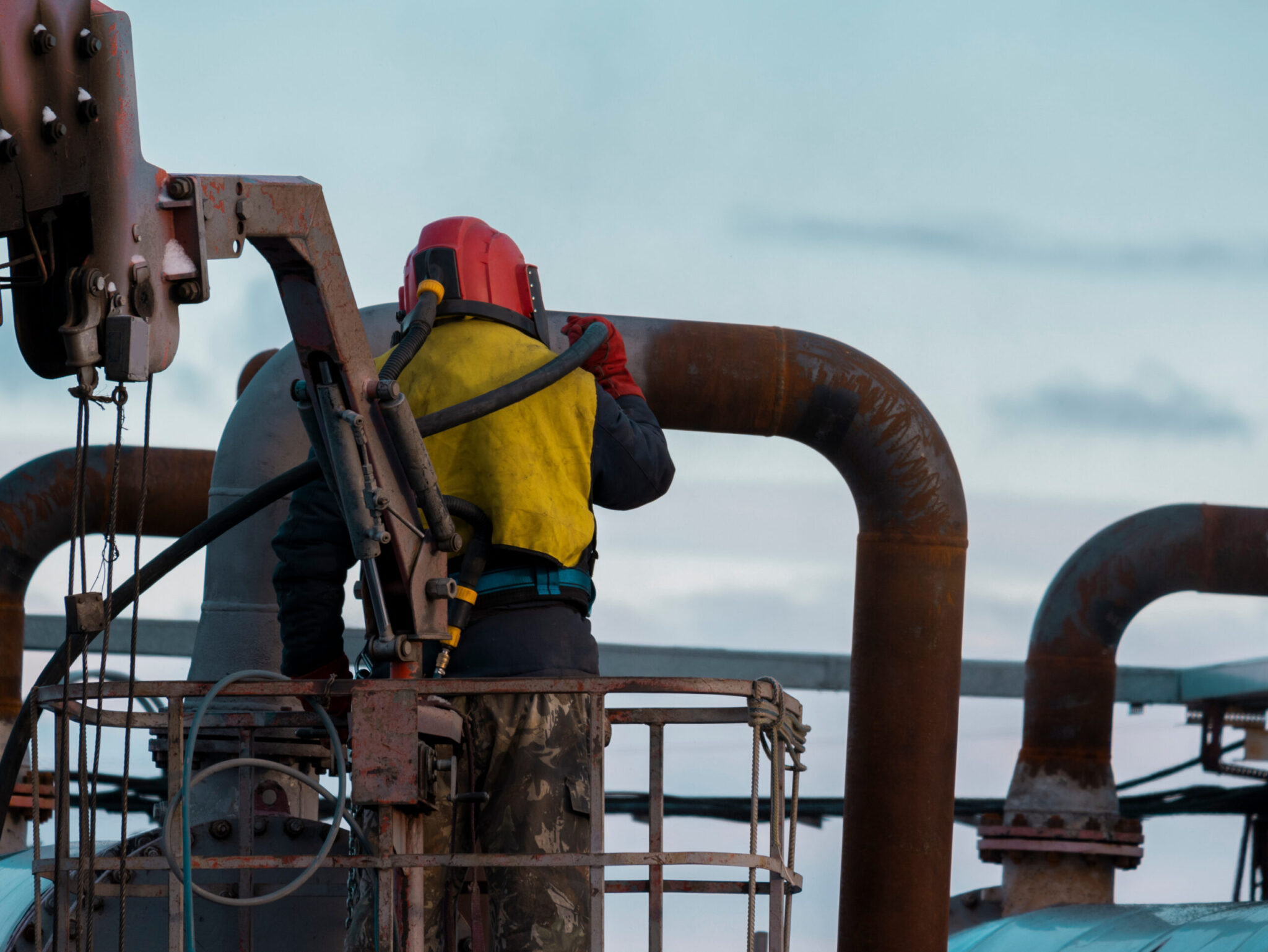
Air compressors drive sandblasting that helps keep oil drilling equipment and oil pipelines free of rust and corrosion.
Processing and Refining
Compressed air is used throughout an oil refinery in several different ways:
-
- Instrument air packages. Compressors supply the air that powers control instruments and pneumatic devices found all over the facility.
- Pneumatic equipment. Tools used for drilling, cutting and welding are often powered by safe, reliable compressed air.
- Process control. Compressed air helps optimize the operation of reactors, separators and other process-related equipment.
- Combustion air. Many facilities use compressors to supply the air needed for combustion in furnaces, boilers and other equipment.
- Emission control. Compressed air drives the systems that help capture volatile organic compounds and other pollutants.
Distribution
Compressed air systems help get the end products—gasoline, fuel oil, kerosene and jet fuel—to the energy, power generation and consumer markets. Not to mention the petroleum byproducts that create myriad plastics and building materials.
Wind Energy
Air compressors power pneumatic tools technicians use to perform tasks such as blade maintenance, gearbox inspections and general repairs. These tools ensure that wind turbines continue to generate clean energy effectively.
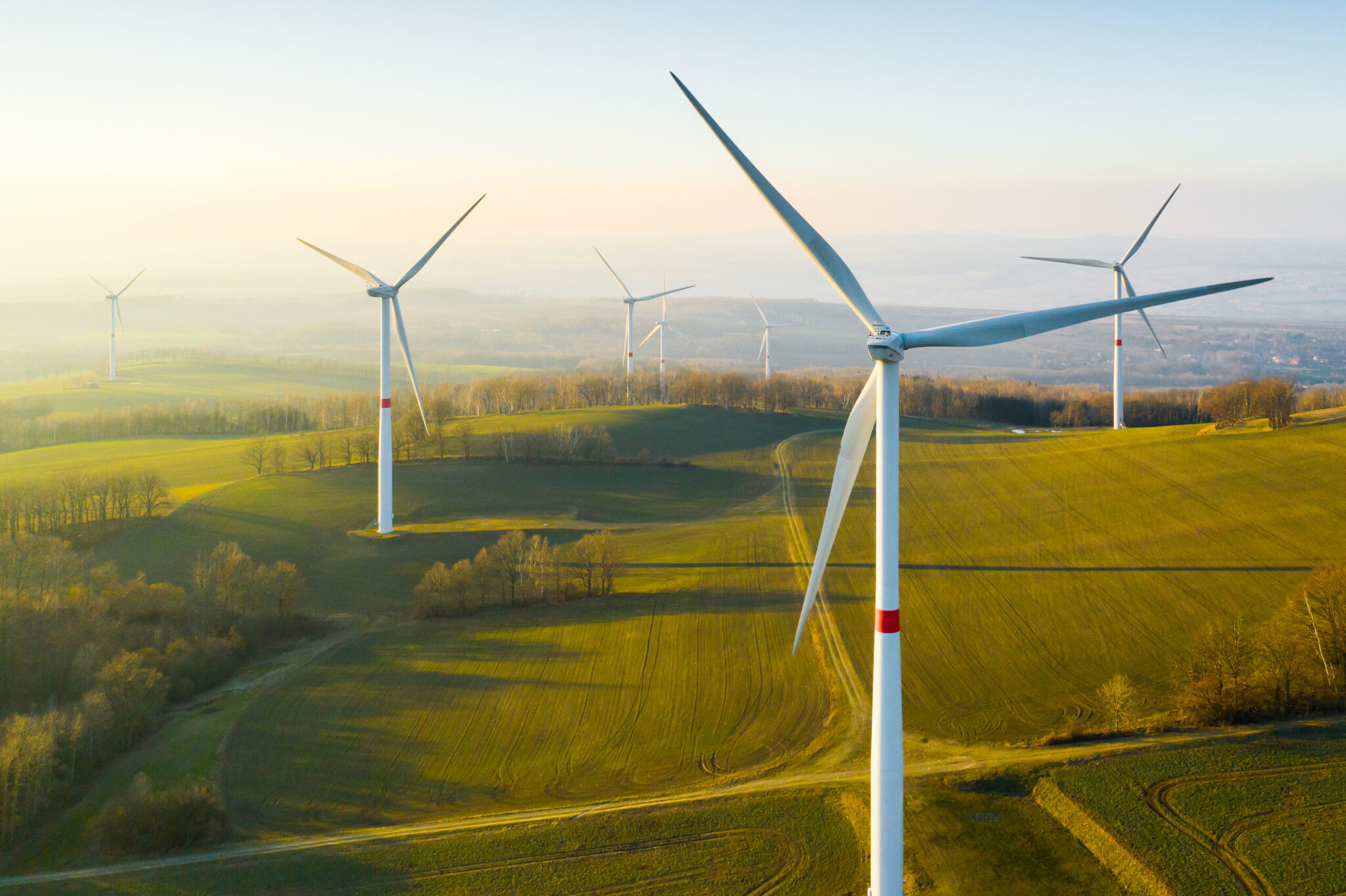
Technicians use pneumatic tools to perform blade maintenance, gearbox inspections and general repairs, ensuring that wind turbines continue to generate clean energy effectively.
Power Generation
Fossil fuel power plants need a precise mixture of fuel and air to create the combustion that ensures efficient energy generation and reduced emissions. Air compressors play a crucial role in supplying the plants with the air they require at the pressures they need.
In addition, power plants use pneumatics extensively to control equipment and system functions by operating control valves, actuators and other devices.
Energy Storage
Compressed air energy storage (CAES) systems store compressed air in underground reservoirs.
The compressed air is released when demand surges, driving turbines and generating electricity. Air compressors play a central role in this energy storage process, contributing to grid stability and peak demand management.
Diesel vs. Electric
Many companies, not just in oil and gas, use compressors powered by diesel motors to fill many of the functions mentioned above, especially as backups when a main air compressor goes down.
Unfortunately, that solution, though it gives you flexibility, is expensive—it costs two to four times more. Plus, it produces a lot of emissions, and the air is of lower quality--most portable diesel air compressors do not include an aftercooler, so they send wet air to the dryer, making it work harder.
In addition, there are significant savings in maintenance costs: a portable diesel compressor will need oil and filters every 250 hours. If you’re operating 24/7, that could mean they need maintenance every ten days. And then there’s a problem of supplying the unit with diesel fuel every 12 hours.
Electric air compressors can offer the same level of flexibility with significant energy savings. Plus, their maintenance is much less of an issue. They will need regular maintenance every three month or 2,000 operating hours.
Local Help
Kaishan USA works with a nationwide network of independent distributors, who can provide on-site help and consultation as needed. These factory-trained air compression experts have an investment in their local communities and can service your air compressor system without a problem. And they have staff members who are skilled in using leak-detection technology on a daily basis.
Key Takeaways
-
- Compressed air plays a crucial role in almost every energy-related application.
- You’ll find air compressors in exploration, transportation, processing, refining, distribution, wind energy, power generation and energy storage.
- Rotary screw air compressors appear in so many applications because they are efficient, safe, reliable, versatile and easy to maintain.
- Rotary screw air compressors are used as backup, trim and point-of-use units in a wide range of applications.
- Two-stage rotary screw air compressors will generate more compressed air for less energy.
Let Us Help
Selecting the right rotary screw air compressor is critical to the operation of any energy-intensive application. If you need help choosing the right compressor for your application, get in touch with the experts at Kaishan. Contact us today.
Random stat or
customer quote
textXXtext
text
Compressed air plays a pivotal role in almost every energy-related application in the global economy.

